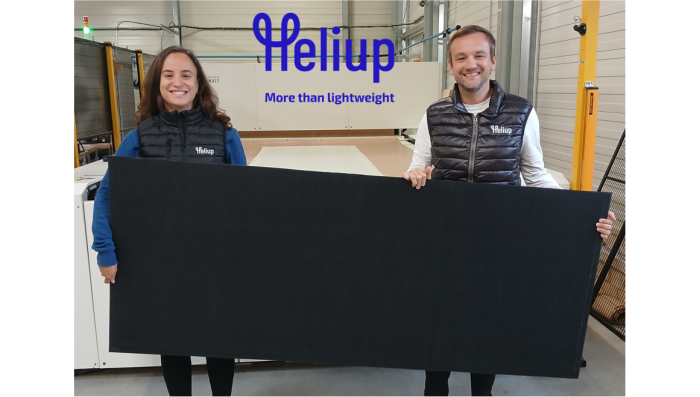Hi!
We are Julien Gaume, CTO and co-founder, and Maria Planells, R&D Project Manager, at Heliup, a french manufacturer of lightweight module for large rooftops on commercial and industrial buildings.
HELIUP is a partner in the European SPHINX project with the aim of integrating the matrix shingling technology into its modules and preparing a 100 kWp demonstrator, with performance and reliability testing carried out at CEA.
What was your original motivation to become a researcher/project manager?
Julien: After completing a PhD focused on solar applications, I joined the CEA to develop next-generation solar panels for diverse sectors including building, aeronautics, and space. My work aimed to improve panel design, reliability, interconnections, and encapsulation.
At Heliup, my mission has been to bridge the gap between research (CEA-INES) and industry, accelerating the adoption of solar technologies on underutilized surfaces such as large rooftops. I’m driven by a strong commitment to industrializing climate-relevant innovations and making solar energy more accessible and impactful.
Maria: After completing my PhD in Materials Science, I was determined to pursue a career in the photovoltaic sector and contribute to applied research projects. I then joined CEA-INES, where I had the opportunity to work on the development of Heliup’s lightweight module technology. When Heliup was founded, I became part of the team as an R&D engineer to continue the product development and support its industrialisation.
What is your (main) research area today?
Julien & Maria: at Heliup we are constantly looking for new materials that could improve the reliability of our lightweight modules and reduce their carbon footprint, as well as developing innovative integration solutions.
What is the main focus of your team in SPHINX?
Julien & Maria: At SPHINX we work on integrating matrix shingle technology into HELIUP modules, ensuring material BOM compatibility, testing UV down-shifting layers and anti-soiling coatings developed by the partner CSEM, carrying out reliability test to confidently install a 100 kWp demo on a large rooftop.
Could you describe your favourite moment/satisfaction when working for the project and – more in general – for your organisation?
Julien: Project-wise: milestones where the new architecture passes tests and shows improved efficiency and shading tolerance. For HELIUP more broadly: commissioning the 100 MW factory in France and its inauguration, as well as winning the European Solar Startup Award 2025 – major achievements for the team.
Maria: The successful large-scale production of matrix shingle lightweight modules has been the most satisfying moment of the SPHINX project, proving that we are getting closer to the demonstrator.
How do you expect SPHINX results will affect your organisation and the PV sector?
Julien & Maria: Thanks to the technology developed as part of the SPHINX project, we will be able to offer more efficient and shade-resistant modules with reduced copper/lead content, and continue to contribute in the European value chain for lightweight BIPV systems.


